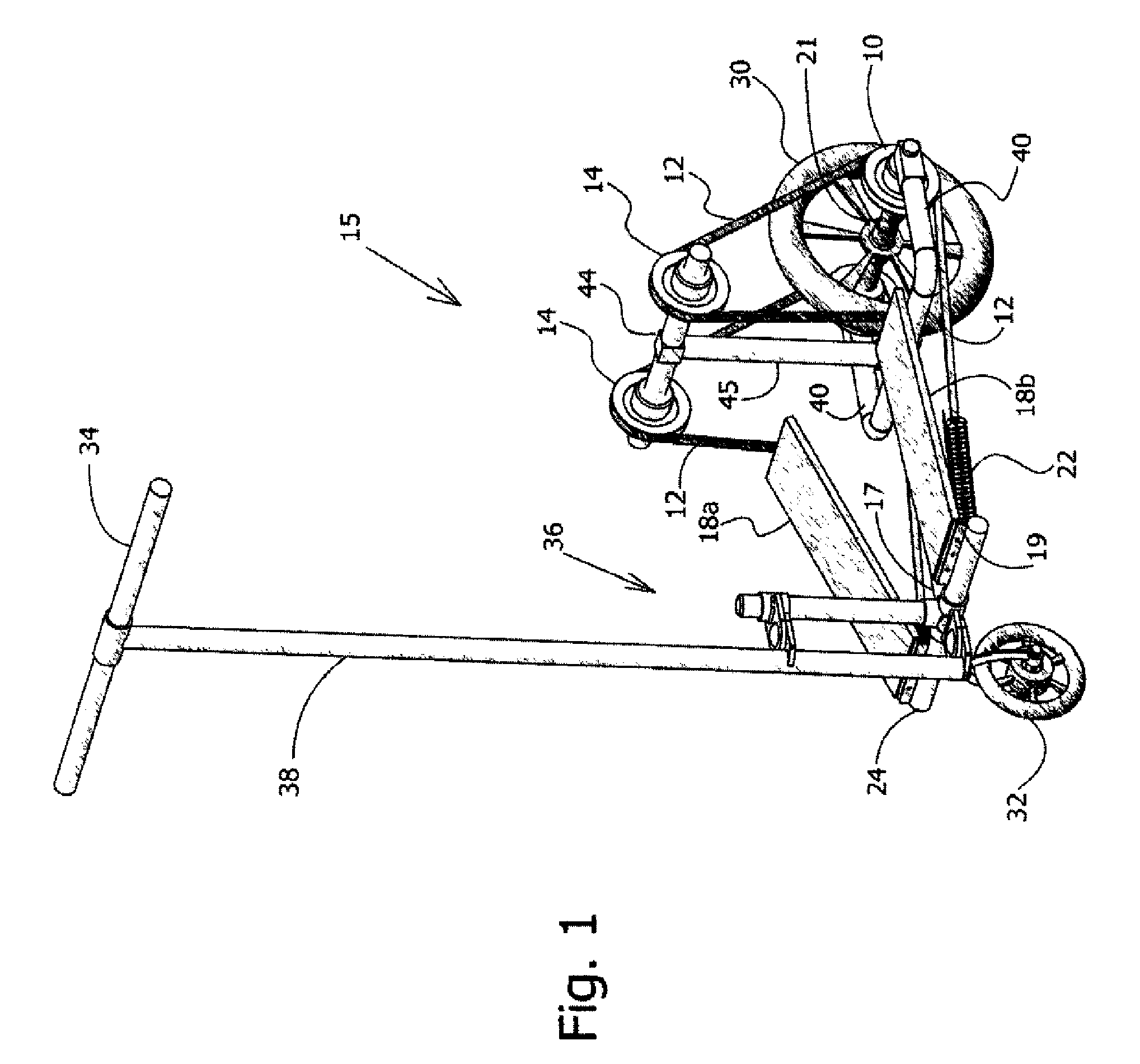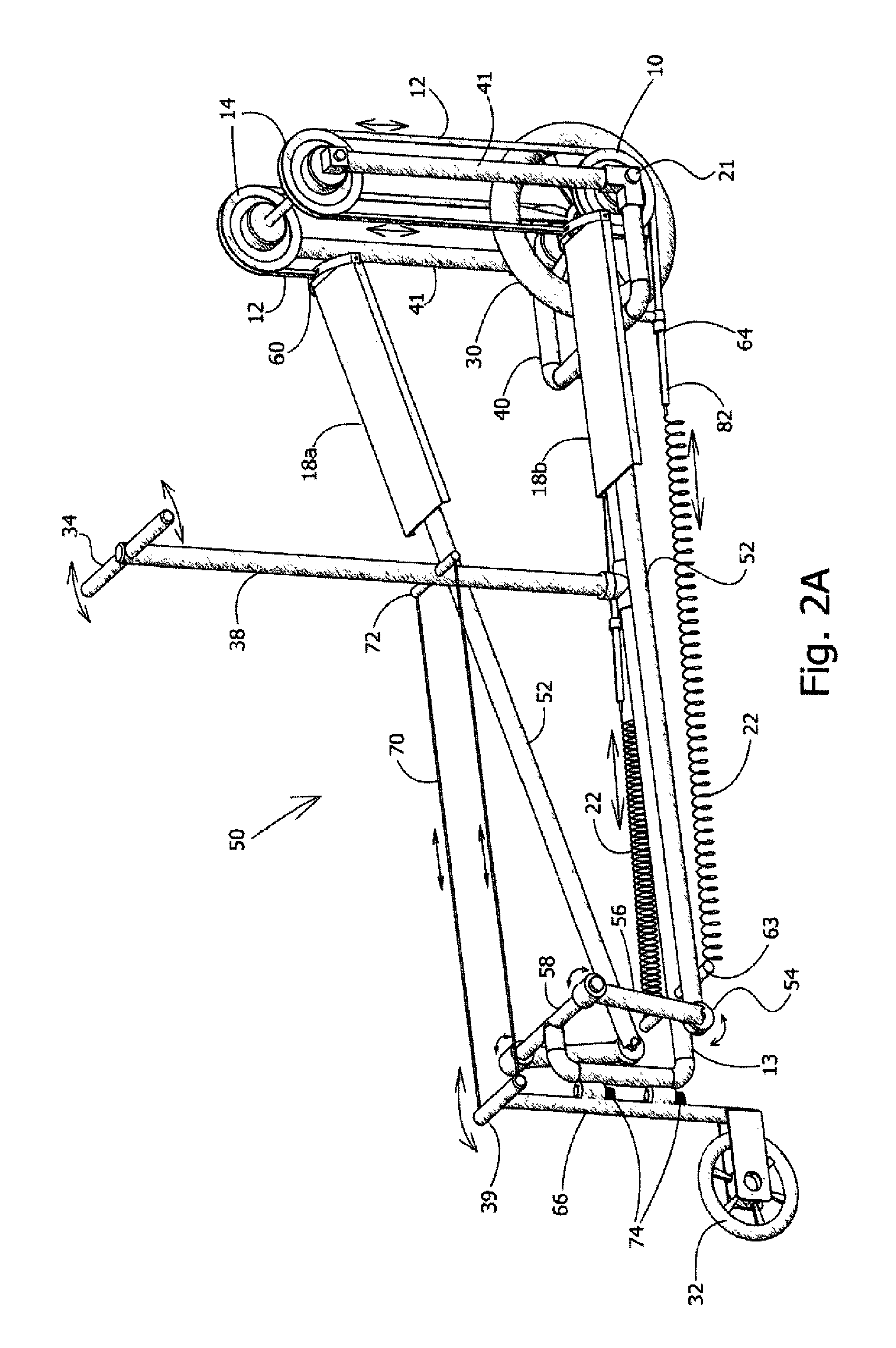Body weight-activated scooter
a body weight and active technology, applied in the field of scooters, can solve the problems of affecting the efficiency of the vehicle, undue stress, and loss of power in the drive-train system, so as to prolong the coasting motion, increase the speed of the ride, and increase the rid
- Summary
- Abstract
- Description
- Claims
- Application Information
AI Technical Summary
Benefits of technology
Problems solved by technology
Method used
Image
Examples
Embodiment Construction
[0034]FIG. 1 is a general isometric view of a two-wheeled scooter constructed in accordance with a preferred embodiment of the invention.
[0035] A two-wheeled scooter 15 comprises steering handlebars 34 mounted on an extendible upright, steering rod 38 rotatably connected to a steering mechanism 36 mechanically attached to the front portion of scooter 15. The height of handlebars 34 is set to accommodate the average height of a rider, but, optionally, may be constructed so as to be adjustable (not shown). A light-weight chassis 17 supports a pair of individually operated treadles 18a and 18b. Steering rod 38 controls the turning of front steering wheel 32. Although only one front steering wheel is shown, by way of example, it is obvious to those skilled in the art that more than one can be used to provide greater stability or improved turning characteristics.
[0036] Treadles 18a / b are pivotably attached at their respective front ends to hinges 19 mounted on lateral extensions 24 of ...
PUM
 Login to View More
Login to View More Abstract
Description
Claims
Application Information
 Login to View More
Login to View More - R&D
- Intellectual Property
- Life Sciences
- Materials
- Tech Scout
- Unparalleled Data Quality
- Higher Quality Content
- 60% Fewer Hallucinations
Browse by: Latest US Patents, China's latest patents, Technical Efficacy Thesaurus, Application Domain, Technology Topic, Popular Technical Reports.
© 2025 PatSnap. All rights reserved.Legal|Privacy policy|Modern Slavery Act Transparency Statement|Sitemap|About US| Contact US: help@patsnap.com



